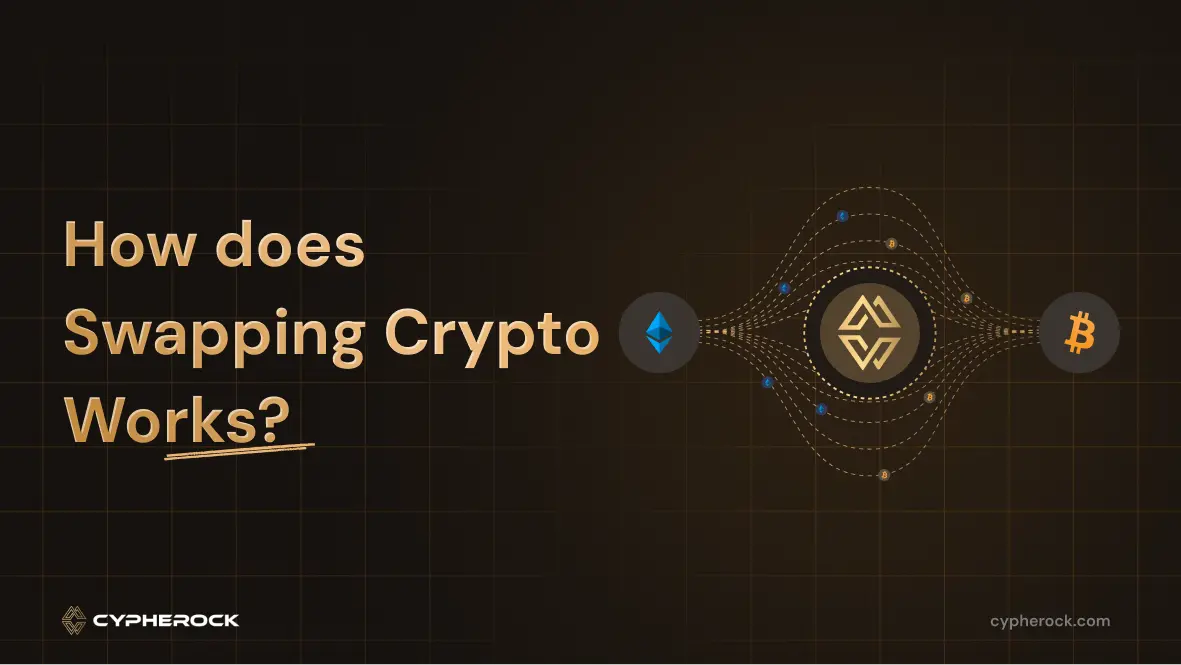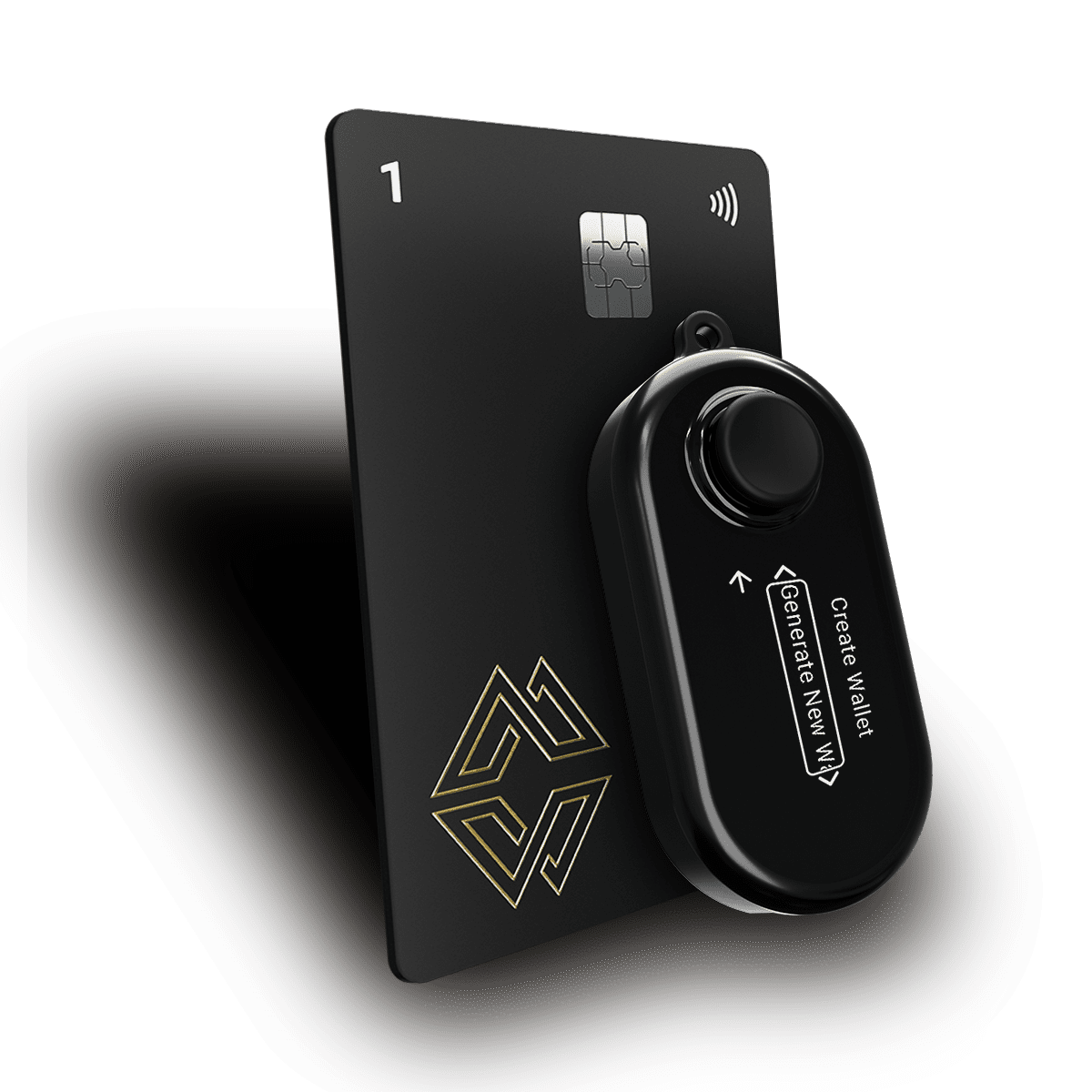

Cryptocurrencies run on different blockchains. Each blockchain has its own rules and a native coin. Bitcoin runs on the Bitcoin network. Ethereum runs on the Ethereum network. Litecoin runs on the Litecoin network.
You need a blockchain’s native coin to use its network. If you want to use Ethereum, you need ETH. If you want to use Bitcoin’s network, you need BTC.
Many people swap between coins to explore new projects. Others swap to move between blockchains for better opportunities. You might also swap to lower your risk or diversify your portfolio.
Swapping helps you do this faster and more cheaply than traditional trading. Trading often means selling for fiat, then buying another coin. Swapping skips that middle step. This saves you money and time.
But there’s more to think about than just speed. You also need to keep your stored crypto safe. Swaps can move coins quickly, but your storage matters most. That’s why security tools like the Cypherock X1 exist. They store your private keys across multiple devices, removing single points of failure.
Crypto swapping is when you exchange one cryptocurrency for another directly. You don’t go through fiat money like USD or EUR.
A swap can be done using smart contracts, decentralized apps (DApps), or trusted intermediaries. These systems let you send one coin and receive another without relying on a traditional exchange.
Trading is different. When you trade, you usually sell your coin for fiat first. Then you use that fiat to buy another coin. This adds time, fees, and extra steps.
In a swap, you just pick your two coins. Then the platform exchanges them for you. For example, if you have Bitcoin and want Ethereum, you can swap BTC directly for ETH. You never touch USD.
This makes the process faster, simpler, and often cheaper than trading.
Not all swaps work the same way. Here are the three main types you’ll see.
An atomic swap is a direct trade between two people. It uses a smart contract called a hash time-locked contract (HTLC).
Both sides send their coins into the contract. The contract releases both coins at the same time, or it cancels the swap.
This method is trustless. Neither side has to trust the other because the smart contract enforces the rules.
Atomic swaps can work across blockchains if they share the same hashing algorithm and time-locking rules.
DEX stands for decentralized exchange. A DEX is a blockchain-based platform that matches buyers and sellers directly.
With a DEX, you keep control of your private keys. You don’t send your funds to the exchange.
Some DEX swaps happen within the same blockchain. Others can work across different blockchains if the DEX supports it.
Examples include Uniswap for Ethereum tokens and PancakeSwap for Binance Smart Chain tokens.
Aggregators scan multiple DEXs to find you the best swap rates. They also choose the best route for your swap.
This can reduce slippage, which is the price difference between when you start and finish a swap.
Aggregators are helpful if you want the best price without searching several platforms yourself.
The biggest difference between swapping and trading is fiat currency.
In trading, you often sell your coin for fiat first. Then you buy another coin with that fiat. This takes time, adds fees, and can be less efficient.
In swapping, you never leave the crypto world. You go straight from one coin to another.
This makes swapping faster and often cheaper. There are fewer steps, fewer intermediaries, and no bank delays.
Even with fast swaps, you should store your assets securely between transactions. A hardware wallet like Cypherock X1 keeps your private keys split across multiple devices. This means even if one device is stolen, your funds are safe.
Swapping offers several big advantages.
Flexibility: You can move between coins quickly to explore new projects or switch strategies. For example, you might swap from ETH to a DeFi token if you see a new opportunity.
Security: You rely less on centralized exchanges, which are common targets for hackers. Swapping directly keeps you in control of your assets.
Efficiency: Swaps are often faster than selling and rebuying through fiat. You also avoid extra trading fees.
Real-world uses include portfolio rebalancing, accessing new DeFi platforms, and moving into coins with better staking rewards.
Let’s say you want to swap Bitcoin (BTC) for Ethereum (ETH). Here’s how it might work.
Step 1: Have both wallet addresses ready. You need your BTC sending address and your ETH receiving address.
Step 2: Choose your swap service. This could be CoinFlip Preferred, a DEX, or an aggregator.
Step 3: Enter the amount of BTC you want to swap. Get a quote for how much ETH you’ll receive.
Step 4: Confirm the quote if you’re happy with it.
Step 5: Send your BTC to the service’s provided wallet address.
Step 6: Wait for blockchain confirmation.
Step 7: Receive your ETH in your wallet.
Always double-check the wallet address before sending. Blockchain transactions can’t be undone if you make a mistake.
Swapping is safer than keeping coins on an exchange, but it’s not risk-free.
Phishing sites: Fake swap sites can steal your coins.
Fake smart contracts: Malicious contracts can drain your wallet.
Address errors: Sending to the wrong address means permanent loss.
Compromised devices: A hacked computer or phone can expose your private keys.
The best protection is to keep your assets in a secure hardware wallet between swaps. The Cypherock X1 stores your private keys in five parts across multiple devices. Even if one is stolen, your funds remain safe.
While swapping can help you avoid the risks of leaving coins on a centralized exchange, it’s not risk-free. Understanding the threats is the first step to avoiding them.
You might click a link that looks like a real swap service but isn’t. Hackers create websites that copy the design of popular platforms. Once you connect your wallet or send coins, they steal your funds. These scams often spread through social media ads, fake emails, or search results that appear above the real service.
Some swaps, especially those on decentralized exchanges, rely on smart contracts. If the contract’s code is malicious or flawed, it can drain your wallet. Once you approve the transaction, the contract may have permission to move all your funds, not just the coins you intended to swap.
Typing or pasting the wrong address is one of the easiest mistakes to make — and one of the costliest. If you send coins to the wrong address, you cannot reverse the transaction. Some malware can even change addresses in your clipboard, replacing them with the hacker’s address.
Even the best swap platform can’t protect you if your phone or computer is infected. Keyloggers, clipboard hijackers, or remote access malware can steal your private keys or change the details of your swap before you hit send.
Some platforms don’t have enough liquidity for the coin pair you want to swap. In low-liquidity conditions, you may get much worse rates than you expect. Some scam platforms manipulate prices to make swaps look fair until you approve them.
When you run into a problem, scammers may pose as the support team for a swapping service. They’ll ask for your private keys or recovery phrases — something legitimate platforms will never request.
Even if your computer or phone is compromised, Cypherock X1 keeps your private keys split across multiple devices. No single device holds the full key. That means even if one device is stolen or hacked, the attacker cannot move your funds. It’s a strong safeguard, especially for frequent swappers who keep funds offline between transactions.
You can reduce most swap risks by following a few essential habits. Think of them as your “crypto seatbelt.”
Double-check everything before sending.
Always confirm the platform’s URL, the coin pair, and both wallet addresses. If you’re copying and pasting an address, check the first and last few characters. This helps you spot if malware has swapped it out.
Use only trusted platforms.
Stick to swap services and DEXs with a strong reputation and active community. Check if they’ve been audited by independent security firms. A quick search for “platform name + scam” can save you thousands.
Keep large holdings in cold storage.
Don’t leave large amounts in a hot wallet just because you plan to swap later. Store them in a hardware wallet like Cypherock X1 and move only the amount you intend to swap.
Avoid swapping on public Wi-Fi.
Public networks can be monitored by hackers. If you must connect while away from home, use a VPN. But ideally, wait until you’re on a private, secure network.
Test with small amounts first.
When using a new platform or swapping a coin for the first time, send a small test transaction. If it works as expected, swap the rest. This protects you from errors and scams.
Keep your devices secure.
Install updates, run antivirus software, and avoid downloading untrusted files or apps. Many wallet thefts start with malware infections.
Enable extra verification layers.
Some platforms let you add email or SMS confirmations for swaps. While this isn’t perfect security, it can stop some quick attacks.
Watch out for fake support offers.
Legitimate platforms will never ask for your private key, recovery phrase, or Cypherock access PIN. If someone asks for these, they are a scammer.
Keep a record of your swaps.
Save transaction IDs and screenshots in case you need to track a problem later. This also helps with portfolio tracking and tax reporting.
By combining these habits with secure storage in Cypherock X1, you create a strong two-layer defense, safe swap execution, plus top-tier offline protection for your holdings.
Crypto swapping is a fast, simple way to move between coins and blockchains. It cuts out fiat steps, lowers fees, and speeds up transactions.
The key to safe swapping is knowing how it works, using trusted platforms, and securing your assets.
When you’re not swapping, store your coins in a hardware wallet like Cypherock X1. Its multi-device key storage makes it one of the most secure options available today.
With the right tools and habits, you can swap with confidence and keep your crypto safe.

Start securing your crypto journey today—visit Cypherock X1 to learn more.
Connect with us:
Twitter: @CypherockWallet
Telegram: Join the Community
